Weeds are huge burdens on your path toward the perfect-looking lawn.
They get in the way with their ugly, prickly appearance. They are blemishes in your well-manicured lawn. They can even make your Northern Virginia lawn look neglected and ignored, like you don’t even take care of your grass in the first place. This can make you look bad in your local neighborhood.
Not cool, right? Weeds are pretty sneaky, and you can just be casually enjoying your lawn, playing fetch with your dog, or kicking the ball with your kid, and weeds find their way in, ruining the best day.
They are advantageous, popping up when they get the chance. They can easily distract you from enjoying your great outdoors.
What’s more is they can be hard to identify so you can figure out how to adequately get rid of them.
For instance, creeping Charlie vs. henbit can be confusing to distinguish. People tend to have trouble telling which is which.
Let’s talk about how you can tell whether a weed is henbit or creeping Charlie and how lawn care services in Northern Virginia can help you get rid of both types of weeds.
Creeping Charlie vs. Henbit: Telling the Difference Between the Two
While you might believe that all weeds are similar, that’s not the case. Different weeds come out at different times of year or require varied methods of control. That’s what makes weeds tricky to control: there is not a one size fits all approach.

And some weeds can be hard to distinguish from each other. Take henbit vs. creeping Charlie. Figuring out exactly which one you’re dealing with can be tough, but it’s important because it can help you better control the weed you’re dealing with in your lawn.
Here we’ll dissect these two weeds so you can learn to better identify which one might be the problem in your Northern Virginia lawn.
All About Henbit
The henbit weed is part of the mint family, but it has a mild scent.
Henbit is a winter annual weed. This means the weed germinates in fall.
What Does Henbit Look Like?
Henbit shares the square stem of the mint family plants.
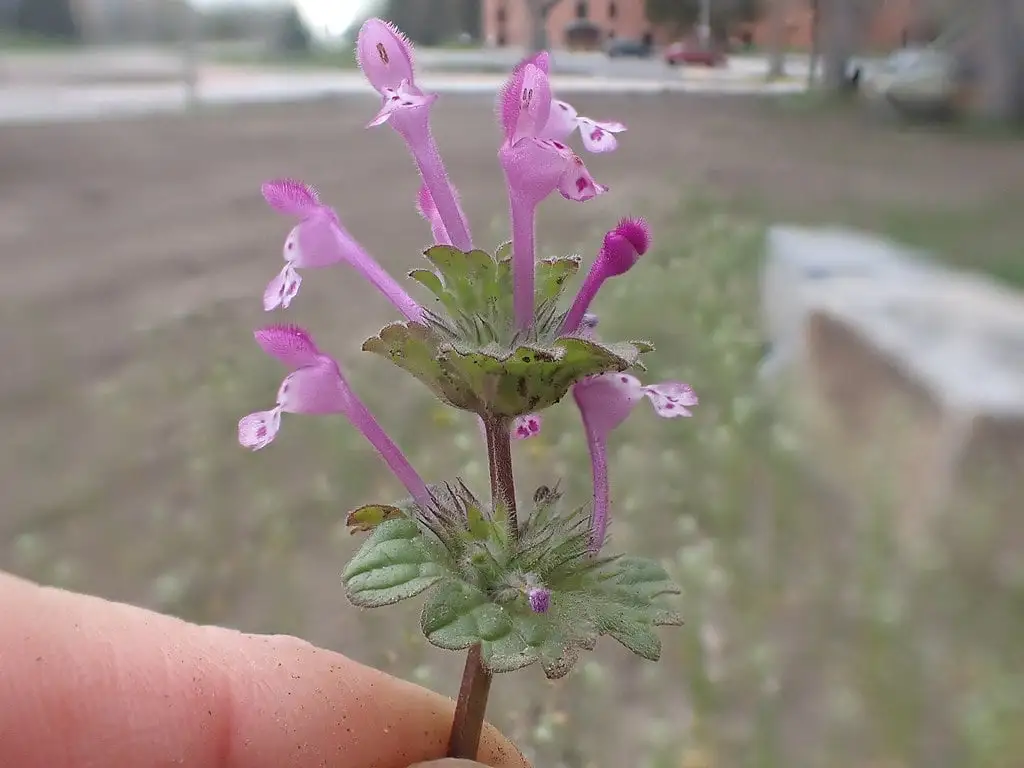
The weed’s round green leaves with deeply scalloped edges attach to deep red short stems. Henbit has pink flowers that provide nectar to pollinators with long tongues.
When Can You Find Henbit in Your Lawn?
Henbit prefers fertile, moist soil and full to partial shade, but it will also tolerate sun.
These winter annuals germinate in autumn, patiently wait through the winter, bloom in the spring, set seeds, and disappear during May as Northern Virginia temperatures warm up.
How Do You Control Henbit?
Since henbit seeds germinate in fall, pre-emergent herbicide applied in early or mid-September can help prevent these seeds from growing. This is a big difference between henbit vs. creeping Charlie.
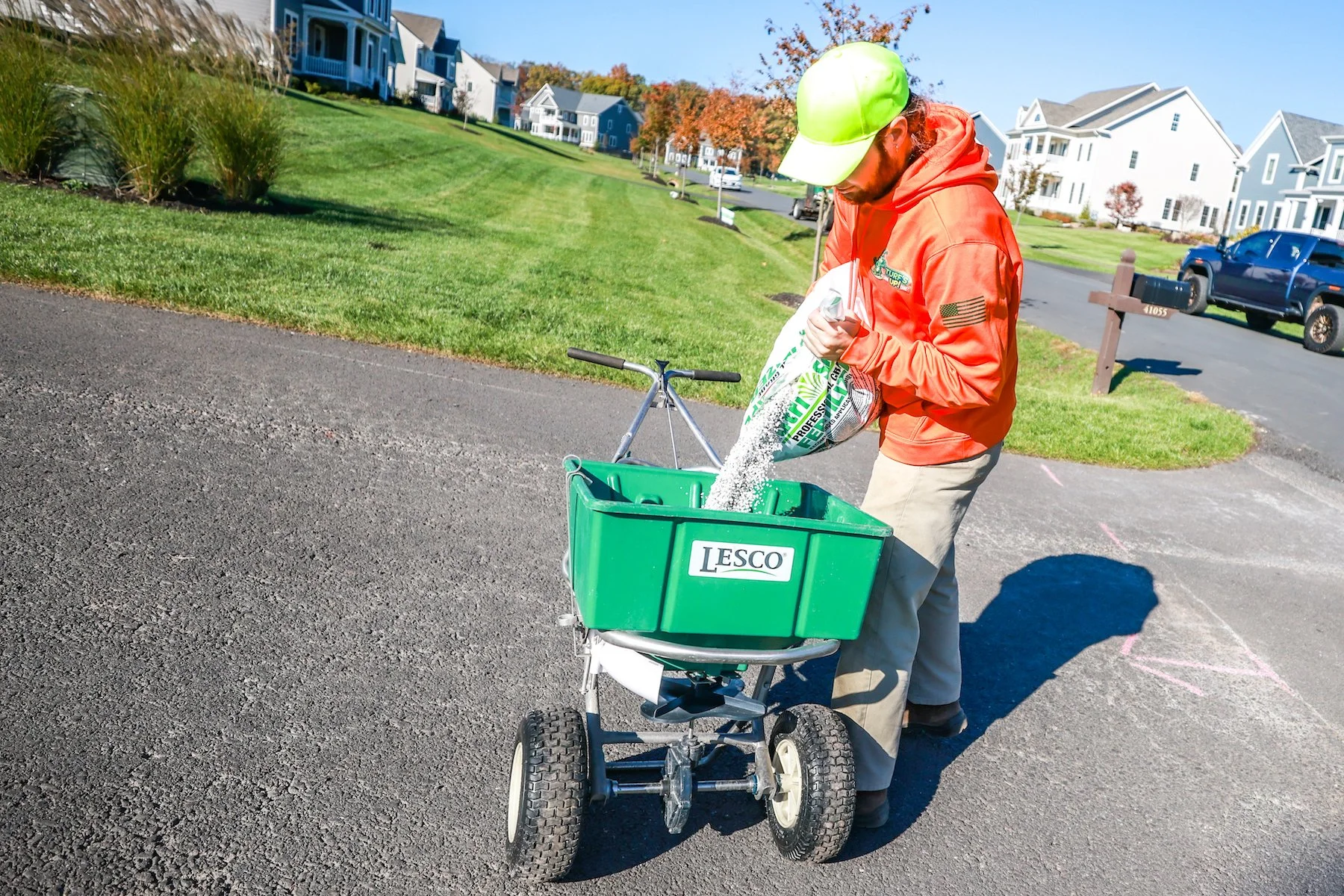
If you miss the pre-emergent application window, the seeds grow into weeds. Then a different management approach is necessary. You can use a post-emergent broadleaf herbicide in early November. Usually, henbit dies back before spring herbicides are applied to manage other weeds.
A Deeper Look At Creeping Charlie or Ground Ivy
This perennial weed has many common names: ground ivy, creeping Jenny, creeping Charlie – to name a few.
When it comes to scent, creeping Charlie will have a stronger, more powerful scent.
What Does Creeping Charlie Look Like?
Creeping Charlie will have round evergreen leaves with scalloped margins that are attached to short stalks. The stems stay low to the ground as ground ivy sprawls across the lawn. Wherever there is a node, the square stems will root into the soil. The weed has blue-purple flowers in clusters of three that bloom from April and May through autumn.
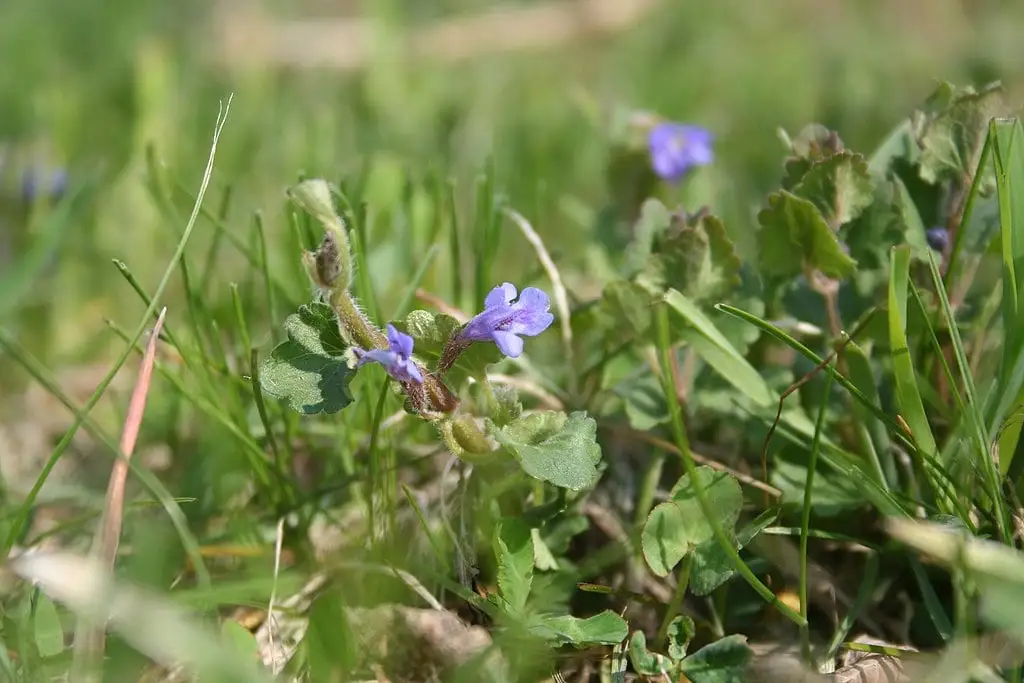
While creeping Charlie leaves are similar, the leaves of henbit will have fine hairs, while creeping Charlie’s leaves are smooth.
Pollinators, including hummingbirds, regularly visit creeping Charlie flowers.
Where Can You Find Creeping Charlie In Your Lawn?
This weed prefers moist, fertile, shady areas but gladly creeps into sunny and even drier spaces.
Both creeping Charlie and henbit grow well in shady spots in your Northern Virginia lawn.
How Do You Control Creeping Charlie?
Creeping Charlie is tougher to control.
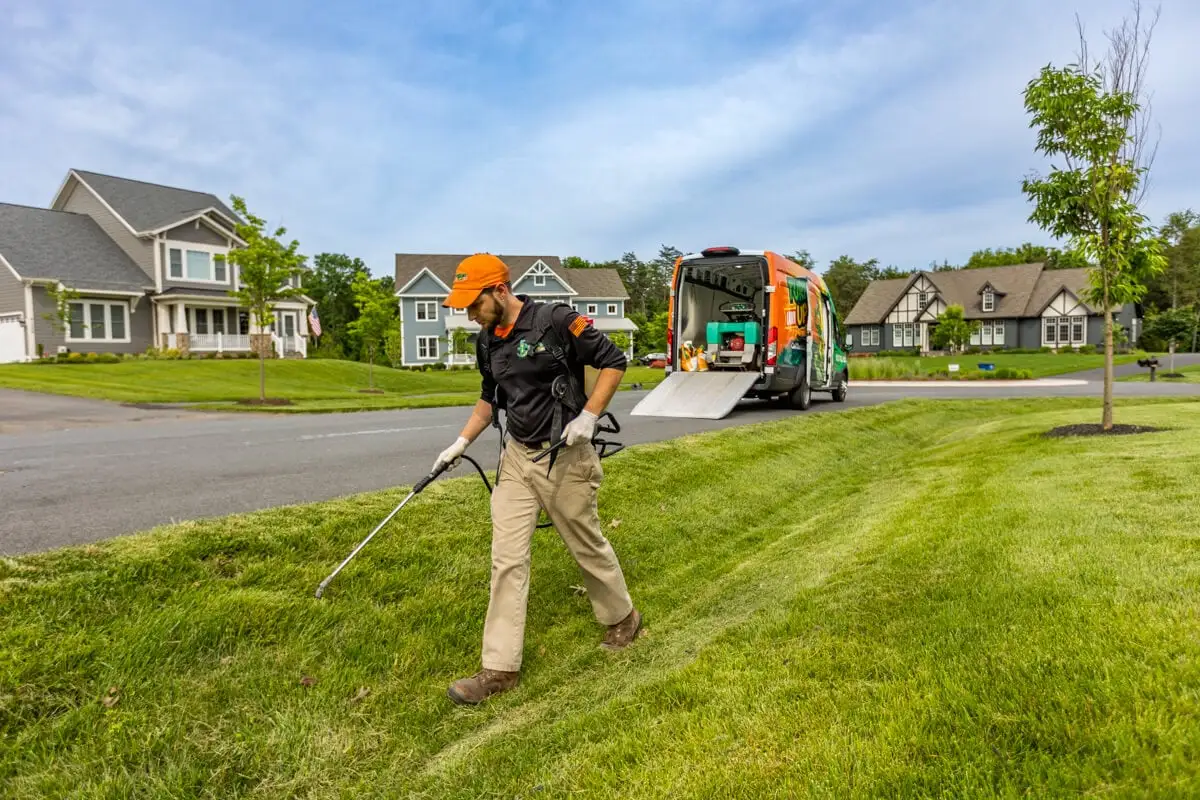
There are no pre-emergent herbicides that work on creeping Charlie. Spring herbicide treatments can suppress it. But multiple applications of broadleaf herbicides in autumn can help since the weed is actively moving nutrients to nourish itself through winter.
Ensure Your Lawn Stands Strong Against Weeds
Weeds are always eager to grow – and always where you least want them to. They are lurking in your Northern Virginia lawn, and if your grass and soil lacks proper nutrition, doesn’t have adequate drainage, and is very thin or stressed out, they attack without hesitation.

However, a healthy lawn can be a big strategy in your weed defense arsenal. We define a healthy lawn as one that is mowed to a 3.5- to 4-inch height; is watered well (not too much and not too little); has the proper balance of fertilization with nutrients that are delivered based on soil test results; and receives annual aeration, overseeding, and topdressing to reduce compaction and bare areas. Your goal is to create an optimal environment for desirable grass to grow so weeds don’t have a chance to sneak their way in.
While your thriving, thick lawn can repel weeds, they can still find little spots to break through when conditions are ripe. That’s when you want a comprehensive weed control strategy to help you get rid of weeds like henbit or creeping Charlie in your Northern Virginia lawn. This will include proper weed identification, since the control strategy will heavily depend on what the weed is, as well as a preventive and curative approach to thoroughly battle weeds.
Choose the Best Professional Partner for Weed Control in Northern Virginia
Weed seeds like creeping Charlie or henbit can sit idle in your Northern Virginia lawn and wait for the perfect weather conditions before erupting. Combine that with one slight lawn care mishap, such as mowing your lawn too short or stressing it out by forgetting to water it, and weeds take advantage of the opportunity to grow.
You want to be outside enjoying your lawn – not constantly sitting on guard waiting for weeds to take over. You certainly don’t want your lawn to look like it’s the worst on the block either.
So what do you do? You’re busy and you want to make spring and summer plans. You certainly don’t want to waste time fighting a weed you can’t even identify.
Don’t fret. Give Turf’s Up a call. We offer complete, proactive lawn care services that include property fertilization, as well as both preventive and curative weed control, throughout the growing season. Not only does it make you look like the smartest neighbor on the block because you have the best looking lawn that seems effortless to maintain, but it’s also the best way to keep your grass weed-free.
Remember, just like lawn weeds hang out for a while once you see them, they also don’t just disappear overnight. Unfortunately, weed seeds are everywhere. With consistent monitoring and control from a professional who knows lawn weeds in Northern Virginia and helps continue to build your lawn’s good health, your grass has a fighting chance to become more weed resistant.
Ready to learn why Turf’s Up could be your totally awesome choice for lawn care services in Northern Virginia? We’re stoked to learn more about you and help you have the best lawn on the block. Get started today with a free quote. Together, we can prepare a customized plan that is perfect for you and your lawn.
Image Source: Creeping Charlie, Henbit
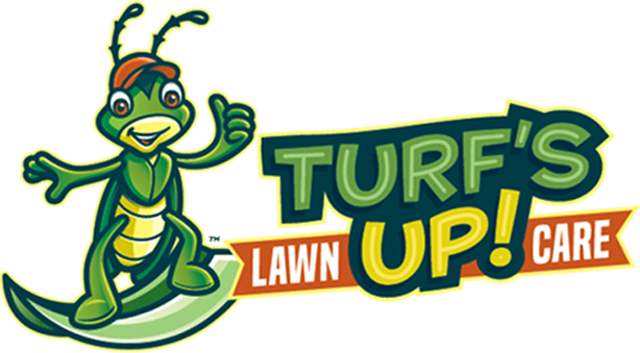
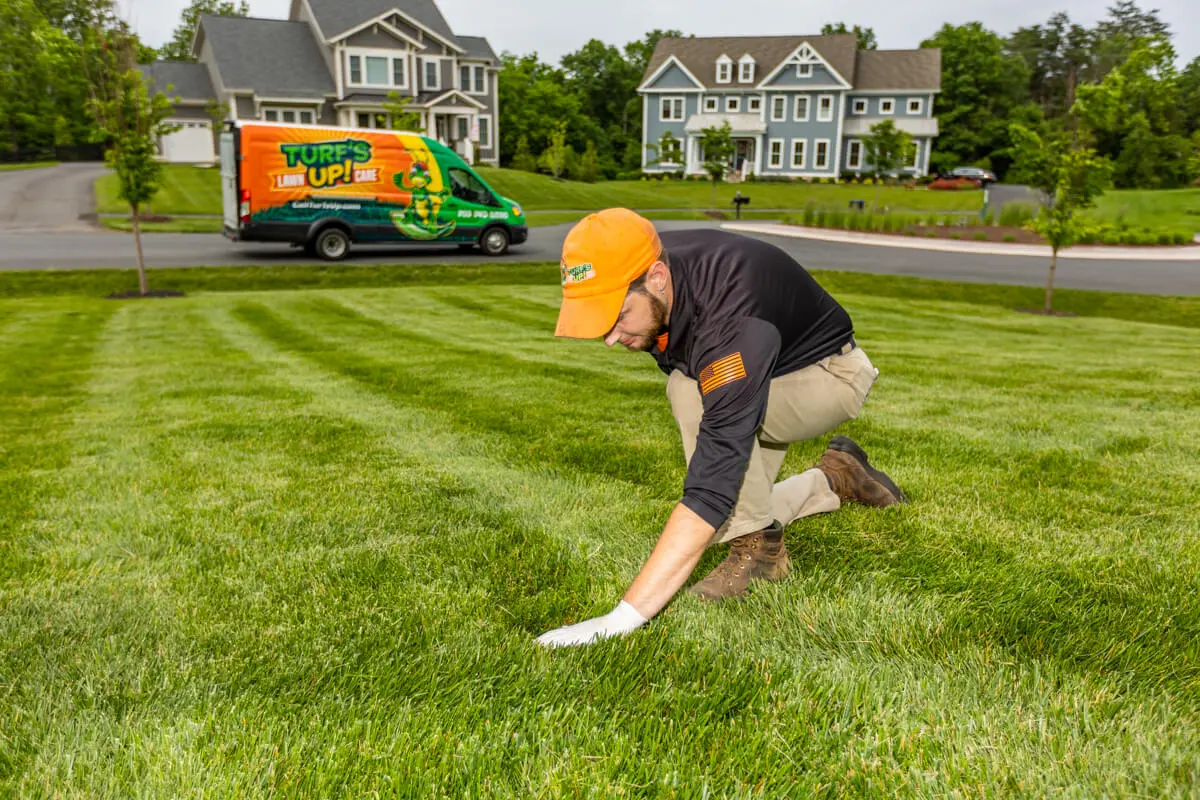




Comments (0)
Thanks for your comment!
Thanks for your feedback! Your comments have been successfully submitted! Please note, all comments require admin approval prior to display.
Error submitting comment!
There is a problem with your comment, please see below and try again.